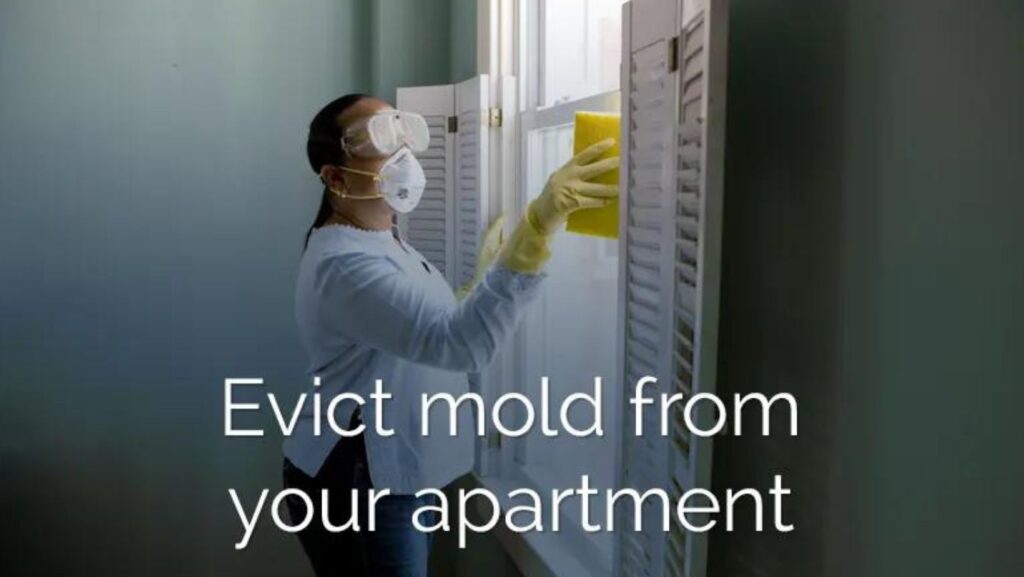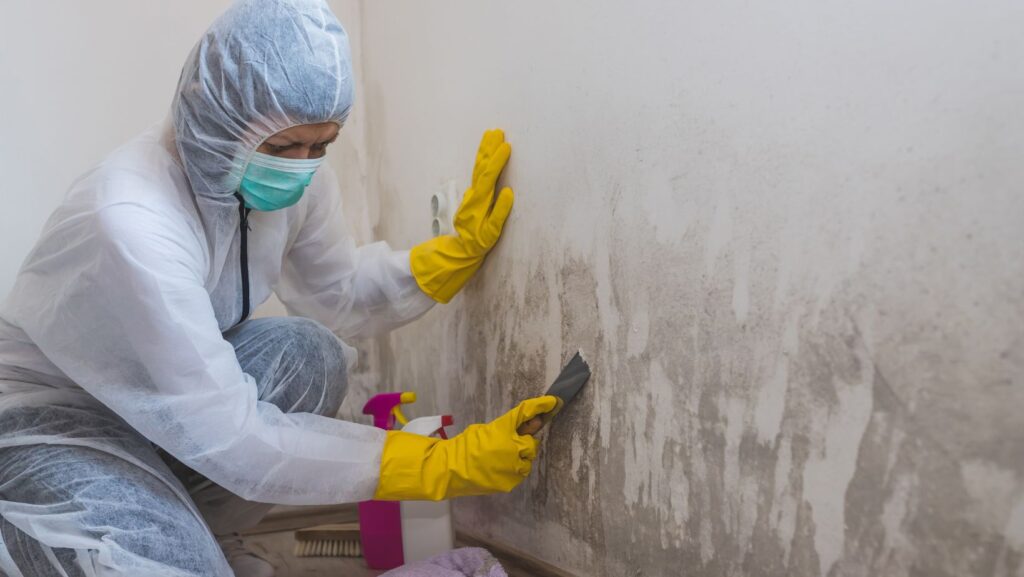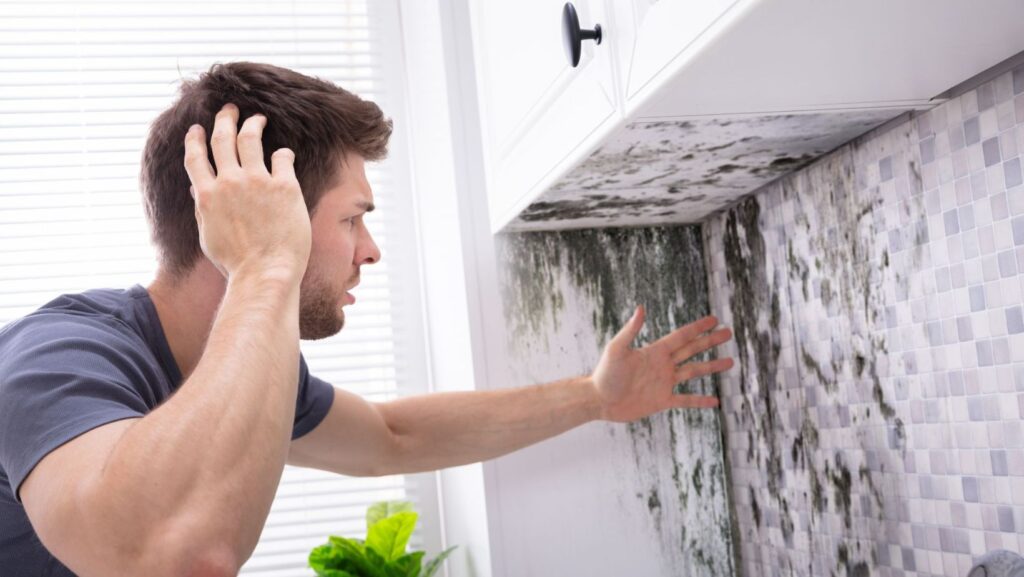When searching for apartments for rent, the issue of mold and excessive moisture demands vigilant attention from tenants and landlords alike. Failure to address these issues promptly can lead to many health risks and property damage.
By grasping the importance of proactive mold prevention and effective remediation techniques, tenants can play a pivotal role in fostering a safe and harmonious living space while maintaining a positive tenant-landlord relationship.
Preventing Mold and Moisture
Maintain Proper Ventilation
One key strategy is the strategic use of exhaust fans in bathrooms and kitchens. These fans are crucial in mitigating excessive humidity levels by expelling damp air, thereby preventing it from settling and fostering mold growth. By promptly removing moisture at its source, tenants can significantly reduce the likelihood of mold formation in these commonly damp areas.
Furthermore, opening windows can markedly improve the overall air circulation within the apartment. Fresh air circulating throughout the space helps in dissipating moisture and maintaining optimal humidity levels, which are essential for mold prevention.
Equally important is the upkeep of proper ventilation mechanisms throughout the apartment. Ensuring that vents are unobstructed and functioning optimally is vital in promoting adequate air movement and preventing stagnant pockets of moisture.
Control Indoor Humidity
The regular use of dehumidifiers, especially in areas prone to dampness such as bathrooms, basements, or kitchens play a pivotal role in extracting excess moisture from the air, creating an inhospitable environment for mold spores to thrive and preventing the onset of mold growth.

Monitoring indoor humidity levels is paramount in the battle against mold infestations. Keeping humidity levels consistently below 60% is deemed as an effective preventive measure, as higher levels create a breeding ground for mold proliferation. By adopting a vigilant approach to humidity control, tenants can proactively manage moisture levels within their rental units, mitigating the risk of mold formation and subsequent damage.
Regular Cleaning and Maintenance
Ensuring that bathrooms and kitchens are cleaned frequently is essential in preventing mold growth. Specifically, tenants should pay extra attention to wiping down surfaces that tend to get wet consistently, such as shower walls and kitchen countertops. By diligently cleaning these areas, tenants can minimize the moisture levels and hinder the development of mold.
Tenants should consider using appropriate cleaning agents and methods suitable for effectively removing moisture-prone areas’ grime and preventing mold formation.
Report Issues Promptly
Timely communication of such issues is key to maintaining a healthy living environment. By promptly reporting any signs of leaks or water damage, you not only protect your health but also prevent potential mold infestations that could deteriorate the property.
Documenting and following up on reported problems is a necessary practice to ensure that the landlord or property manager takes appropriate action. Keeping a record of the reported issues can help track the timeline of events and serve as evidence of your proactive approach.
Mold and Moisture Remediation
Identifying Mold
One of the key indicators of mold growth is the distinctive musty odor it emits. This smell is often described as earthy, damp, or musty, and it typically arises from hidden mold colonies within walls, ceilings, or other concealed spaces. The musty odor can permeate the air, signaling the need for further investigation to pinpoint the mold’s exact location.

In addition to the musty smell, visible spots or patches are a clear indication of mold presence. Mold growth can manifest in various colors, including green, black, or even pink, depending on the type of mold. These spots may appear on walls, ceilings, or floors, and they can sometimes resemble a fuzzy texture, especially in areas with high moisture levels.
To effectively combat mold issues, it is essential to conduct regular checks in specific areas where mold is likely to flourish. Bathrooms are notorious for mold growth due to the combination of high humidity levels and limited ventilation. The steam from showers and baths creates a perfect breeding ground for mold, especially in hard-to-reach corners and grout lines.
Windowsills are another hotspot for mold development in rental apartments. Condensation buildup on windows can lead to moisture accumulation, providing an ideal environment for mold spores to settle and multiply. Regularly inspecting windowsills for any signs of mold, such as discoloration or dark spots, can help you address the issue promptly before it spreads further.
Under sinks, especially in kitchens and bathrooms, are prone to mold growth due to plumbing leaks or spills that may go unnoticed for extended periods. The dark, damp environment beneath sinks can foster mold colonies, impacting not only the area under the sink but also potentially spreading to nearby surfaces.
Safe Cleaning Practices
Make sure to equip yourself with the appropriate protective gear, such as sturdy gloves and a quality mask, before embarking on any mold cleaning endeavor. These measures are crucial in safeguarding your health by minimizing direct contact with mold spores, which can cause respiratory issues and other health complications.
In addition to protective gear, choosing the right cleaning solutions is paramount. Opt for effective options like diluted bleach or commercial mold removers to ensure thorough mold removal. Diluted bleach is a powerful agent that can help kill mold and disinfect contaminated surfaces. Likewise, commercial mold removers specifically formulated for mold remediation can streamline the cleaning process and provide optimal results.
When to Seek Professional Help
If you notice mold spreading across a surface larger than 10 square feet, it is considered a significant issue that requires professional assessment and remediation. This threshold serves as a practical guideline for tenants to gauge when the mold situation necessitates expert intervention. Moreover, if there are signs of mold growth concealed within wall cavities or behind fixtures, it indicates a potentially extensive problem that warrants immediate attention from professionals.
Professional mold remediation companies possess the specialized knowledge, advanced equipment, and industry experience necessary to effectively address large-scale mold infestations. Their expertise enables them to comprehensively assess the mold-affected areas, identify underlying moisture sources contributing to the problem, contain the spread of mold spores, safely remove contaminated materials, and implement measures to prevent future mold recurrence.



